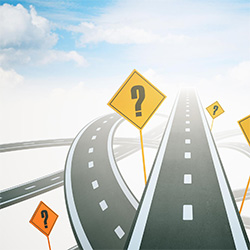What is the main difference between speed bumps and speed humps?
Speed bumps are designed to be more abrupt, with a higher elevation and shorter width, to forcefully reduce vehicle speeds, often found in parking lots or private roads. Speed humps are less aggressive, lower, and designed for vehicles to pass over them at reduced speeds, commonly used in residential areas and school zones.
Where are speed humps typically installed?
Speed humps are typically installed in areas where pedestrian safety is a priority, such as school zones, residential neighborhoods, and near parks, to encourage slower driving speeds.
What are Swedish-style speed tables and how do they differ from other speed control devices?
Swedish-style speed tables are raised areas on the road with a single sharp ramp, providing a smoother ride for buses and larger vehicles, as opposed to traditional speed tables which have two sharp ramps.
How do raised intersections contribute to traffic calming?
Raised intersections are essentially speed tables that cover an entire intersection, with ramps at each entry point. They elevate the intersection to sidewalk level, making it more visible and safer for pedestrians and other vulnerable road users.
What are some concerns cyclists have regarding speed bumps and humps?
Cyclists often find speed bumps uncomfortable and inefficient to ride over, especially at higher speeds or downhill. They can also cause damage to bicycles and cargo due to the lack of suspension on most city bikes.
What are the legal and policy considerations for installing speed control devices?
The installation of speed control devices involves adhering to regulatory frameworks, ensuring the safety and accessibility for emergency services, and engaging with the community to make informed policy decisions.
What is the main difference between speed bumps and speed humps?
Speed bumps are designed to be more abrupt, with a higher raise and usually shorter in width, forcing vehicles to slow down significantly. They are often found in parking lots and private roads. Speed humps are gentler, lower in height, and spread across a wider area, making them suitable for residential areas and school zones where they slow down traffic without being too jarring.
Where are speed cushions typically used, and how do they differ from speed bumps?
Speed cushions are a type of traffic calming device similar to speed bumps but with cuts allowing emergency vehicles to pass through without delay. They are 12 ft long and 3 to 4 in tall, covering the entire width of the pavement, and are used nationwide.
How do radar speed signs contribute to traffic calming?
Radar speed signs display the speed of each passing vehicle alongside the speed limit, reminding drivers of the current speed limit and advising them to slow down if they are exceeding it. This visual cue helps in reducing vehicle speeds and promoting safer driving habits.
What are the benefits of raised crosswalks and where are they installed?
Raised crosswalks are typically 10 ft wide with a flat top and 3 inches in height, extending 22 ft in length. They serve to slow down traffic and enhance pedestrian safety by elevating the crossing point. Their installation must comply with the city’s crosswalk policy, and they are often placed in areas with high pedestrian activity.
How does the community participate in traffic calming initiatives?
The community is involved through neighborhood meetings and feedback sessions where residents can express their preferences for traffic calming measures. These measures are subject to approval by city officials and relevant departments, and residents may participate in voting procedures to make decisions about the implementation of these measures.
What is the process for monitoring and adjusting traffic calming measures after installation?
After installation, a follow-up study is conducted at least 6 months later to collect data on traffic speed and volume. This information is used to document any changes and to continuously improve traffic calming measures. Requests for adjustments can be reconsidered based on new data or if previous attempts were unsuccessful under certain conditions.


